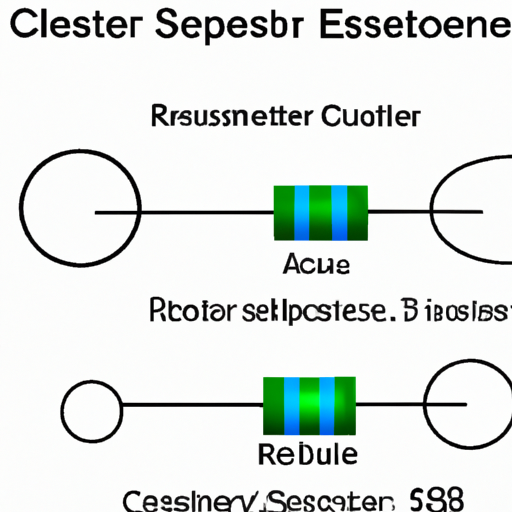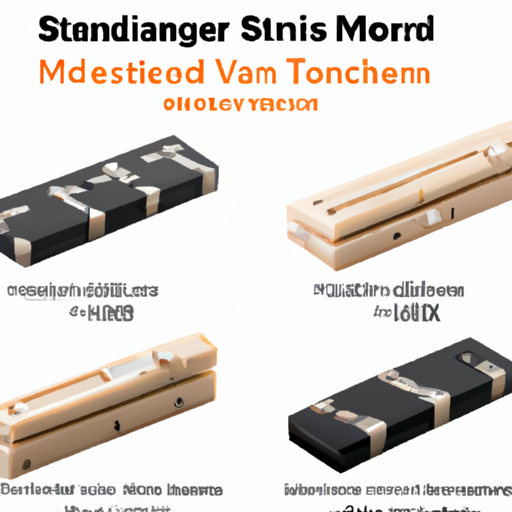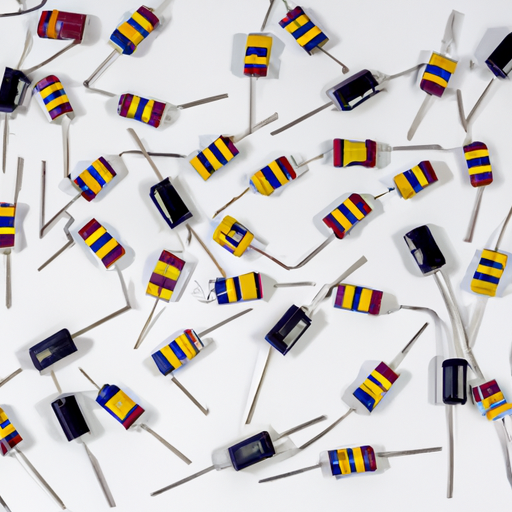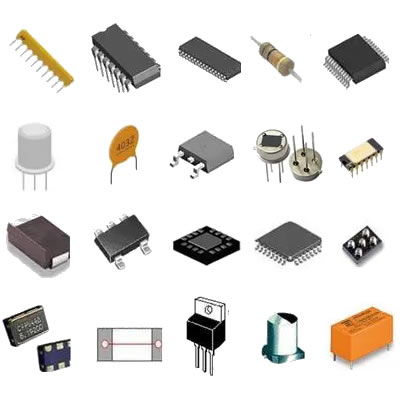Latest Current Sensing Resistor Specifications
Latest Current Sensing Resistor Specifications
I. Introduction
A. Definition of Current Sensing Resistors
Current sensing resistors, often referred to as shunt resistors, are specialized components used to measure the flow of electric current in a circuit. By introducing a known resistance into the circuit, these resistors allow for the calculation of current based on the voltage drop across them, following Ohm's Law (V = IR).
B. Importance of Current Sensing in Electrical Applications
In modern electronics, accurate current measurement is crucial for various applications, including power management, battery monitoring, and motor control. Current sensing resistors play a vital role in ensuring the efficiency and safety of electrical systems by providing real-time data on current flow, which can be used for diagnostics, control, and optimization.
C. Overview of the Document's Purpose and Scope
This blog post aims to provide an in-depth understanding of the latest specifications of current sensing resistors, their applications, and the trends shaping their development. By exploring these aspects, we hope to equip engineers and designers with the knowledge needed to select the right components for their projects.
II. Understanding Current Sensing Resistors
A. What are Current Sensing Resistors?
1. Basic Functionality
Current sensing resistors operate on a simple principle: they create a small voltage drop proportional to the current flowing through them. This voltage drop can be measured and converted into a current reading, allowing for precise monitoring of electrical flow.
2. Types of Current Sensing Resistors
There are several types of current sensing resistors, including:
Metal Film Resistors: Known for their stability and low temperature coefficient, making them suitable for precision applications.
Wirewound Resistors: Often used in high-power applications due to their ability to handle significant current loads.
Thin Film Resistors: Offer high precision and low noise, ideal for sensitive measurement applications.
B. Applications of Current Sensing Resistors
1. Power Management
In power management systems, current sensing resistors help monitor and control power consumption, ensuring that devices operate efficiently and within safe limits.
2. Battery Monitoring
For battery-operated devices, these resistors are essential for monitoring charge and discharge cycles, helping to extend battery life and prevent overcharging.
3. Motor Control
In motor control applications, current sensing resistors provide feedback for controlling motor speed and torque, enhancing performance and reliability.
4. Renewable Energy Systems
In renewable energy systems, such as solar inverters, current sensing resistors are used to optimize energy conversion and monitor system performance.
III. Key Specifications of Current Sensing Resistors
A. Resistance Value
1. Ohmic Value Range
Current sensing resistors typically have low resistance values, often in the milliohm range, to minimize power loss while still providing accurate current measurements.
2. Tolerance Levels
Tolerance levels indicate how much the actual resistance can vary from the specified value. Common tolerance levels for current sensing resistors range from ±1% to ±5%.
B. Power Rating
1. Definition and Importance
The power rating of a resistor indicates the maximum amount of power it can dissipate without overheating. This specification is critical for ensuring the reliability and longevity of the component.
2. Common Power Ratings in the Market
Current sensing resistors are available in various power ratings, typically ranging from 0.1W to several watts, depending on the application requirements.
C. Temperature Coefficient
1. Explanation of Temperature Coefficient
The temperature coefficient measures how much a resistor's value changes with temperature. A low temperature coefficient is desirable for maintaining accuracy across varying environmental conditions.
2. Impact on Performance
A high temperature coefficient can lead to significant measurement errors, especially in applications where temperature fluctuations are common.
D. Size and Form Factor
1. Common Packages (e.g., SMD, Through-Hole)
Current sensing resistors come in various packages, including surface mount devices (SMD) and through-hole types. The choice of package affects the resistor's thermal performance and ease of integration into circuits.
2. Importance of Size in Design
As electronic devices become smaller and more compact, the size of current sensing resistors becomes increasingly important. Miniaturization allows for more efficient use of space on printed circuit boards (PCBs).
E. Voltage Rating
1. Definition and Relevance
The voltage rating indicates the maximum voltage that can be applied across the resistor without risking breakdown. This specification is crucial for ensuring safe operation in high-voltage applications.
2. Typical Voltage Ratings for Different Applications
Current sensing resistors typically have voltage ratings ranging from a few volts to several hundred volts, depending on their intended use.
IV. Latest Trends in Current Sensing Resistor Technology
A. Advancements in Materials
1. Use of Metal Foil vs. Thin Film
Recent advancements in materials have led to the increased use of metal foil and thin film technologies in current sensing resistors. Metal foil resistors offer excellent stability and low noise, while thin film resistors provide high precision and low temperature coefficients.
2. Impact on Performance and Reliability
These advancements enhance the performance and reliability of current sensing resistors, making them suitable for demanding applications in automotive, industrial, and consumer electronics.
B. Integration with Smart Technologies
1. IoT and Smart Grids
The integration of current sensing resistors with Internet of Things (IoT) technologies and smart grids is a growing trend. This integration allows for real-time monitoring and control of energy consumption, leading to improved efficiency and sustainability.
2. Enhanced Monitoring Capabilities
Smart technologies enable enhanced monitoring capabilities, allowing for predictive maintenance and better management of electrical systems.
C. Miniaturization and High Precision
1. Trends Towards Smaller Resistors
As electronic devices continue to shrink, there is a trend towards miniaturization in current sensing resistors. Smaller resistors can fit into tighter spaces while still providing accurate measurements.
2. Importance of Precision in Modern Applications
High precision is increasingly important in modern applications, where even small variations in current can lead to significant performance issues.
V. Selecting the Right Current Sensing Resistor
A. Factors to Consider
1. Application Requirements
When selecting a current sensing resistor, it is essential to consider the specific requirements of the application, including the expected current range, power dissipation, and environmental conditions.
2. Environmental Conditions
Factors such as temperature, humidity, and exposure to chemicals can affect the performance of current sensing resistors. Choosing a resistor that can withstand these conditions is crucial for long-term reliability.
3. Budget Constraints
While performance is essential, budget constraints also play a role in selecting the right component. It is important to find a balance between cost and performance.
B. Common Mistakes to Avoid
1. Underestimating Power Ratings
One common mistake is underestimating the power ratings required for a specific application. This can lead to overheating and failure of the resistor.
2. Ignoring Temperature Effects
Another mistake is ignoring the effects of temperature on resistance values. Failing to account for temperature variations can result in inaccurate current measurements.
VI. Case Studies
A. Example 1: Current Sensing in Electric Vehicles
1. Specifications Used
In electric vehicles, current sensing resistors are used to monitor battery performance and motor control. Specifications typically include low resistance values (in the milliohm range), high power ratings, and low temperature coefficients.
2. Performance Outcomes
The use of high-quality current sensing resistors in electric vehicles has led to improved energy efficiency, extended battery life, and enhanced overall performance.
B. Example 2: Renewable Energy Systems
1. Specifications Used
In renewable energy systems, such as solar inverters, current sensing resistors are critical for optimizing energy conversion. Specifications often include high voltage ratings and low resistance values.
2. Performance Outcomes
The implementation of advanced current sensing resistors in renewable energy systems has resulted in increased energy yield and better system reliability.
VII. Conclusion
A. Summary of Key Points
Current sensing resistors are essential components in modern electronics, providing accurate measurements of current flow in various applications. Understanding their specifications, including resistance value, power rating, temperature coefficient, size, and voltage rating, is crucial for selecting the right component.
B. Future Outlook for Current Sensing Resistors
As technology continues to evolve, we can expect further advancements in current sensing resistor technology, including improved materials, integration with smart technologies, and increased miniaturization.
C. Final Thoughts on Importance in Modern Electronics
In conclusion, current sensing resistors play a vital role in ensuring the efficiency and safety of electrical systems. By staying informed about the latest specifications and trends, engineers and designers can make informed decisions that enhance the performance of their applications.
VIII. References
A. Academic Journals
- IEEE Transactions on Industrial Electronics
- Journal of Electronic Materials
B. Industry Reports
- Market Research Reports on Resistor Technologies
- Industry Analysis on Current Sensing Solutions
C. Manufacturer Specifications and Data Sheets
- Vishay Precision Group
- Ohmite Manufacturing Company
This blog post provides a comprehensive overview of the latest specifications and trends in current sensing resistors, equipping readers with the knowledge needed to make informed decisions in their electronic designs.




